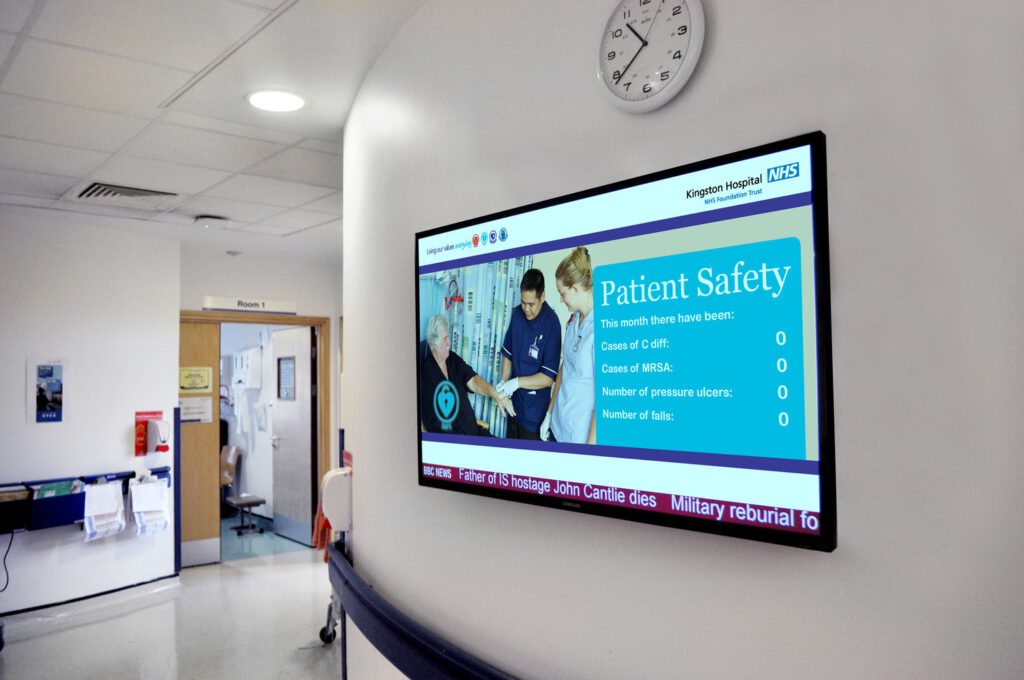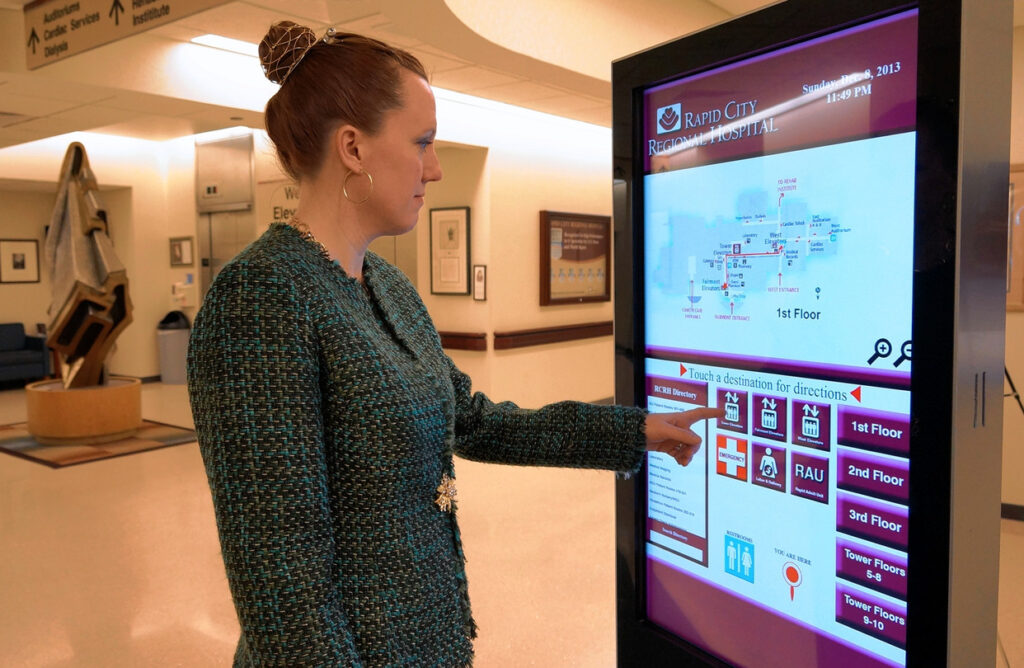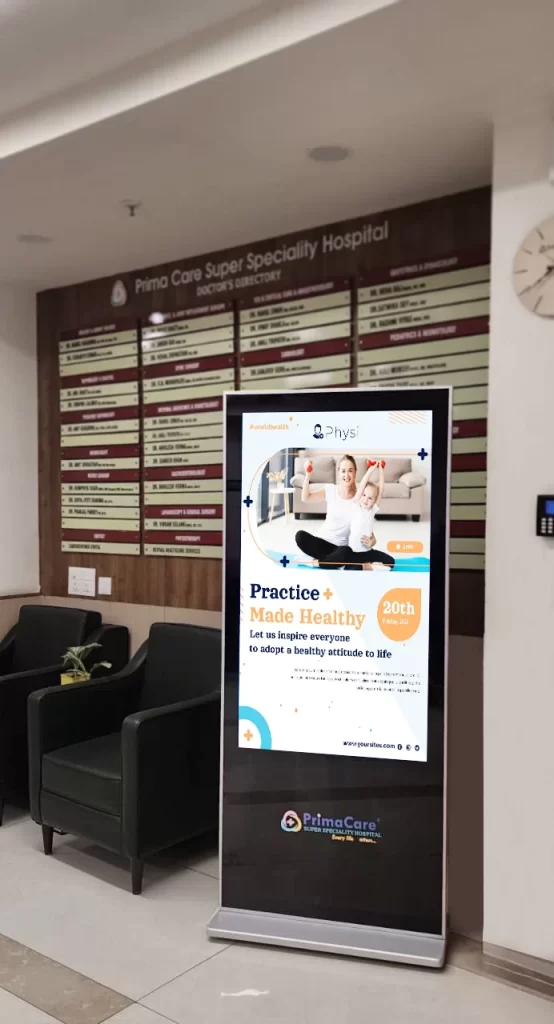
Blog
Read what's happening in FirstouchKiosk | Keep update yourself about best digital signage solution & technology. Learn how digital signage / digital kiosk / digital notice board and digital standees can help in your business growth.

The healthcare industry is undergoing a profound transformation driven by cutting-edge technology that prioritizes patient-centered care and operational efficiency. Among the most impactful innovations is digital signage, which is quickly becoming an essential tool in hospitals and clinics. From enhancing communication to improving navigation and reducing stress, digital signage offers immense benefits for both patients and healthcare providers.
Gone are the days of confusing paper directories, cluttered bulletin boards, and static signage that fails to evolve with a hospital’s dynamic needs. Today, sleek digital displays, interactive kiosks, and versatile digital standees are reshaping how patients, visitors, and staff interact with the healthcare environment. These solutions offer real-time updates, personalized experiences, and visually engaging content that make every hospital visit more seamless and supportive.

In this comprehensive guide, we explore the transformative power of digital signage in modern healthcare settings. We’ll look at why hospitals are rapidly adopting this technology, the benefits it offers, how to implement it effectively, and what the future holds.
Why Traditional Signage Fails Modern Hospitals
Hospitals are inherently complex, high-stress environments. Patients often arrive feeling anxious, confused, or in pain, and navigating sprawling facilities can be overwhelming. Unfortunately, traditional signage fails to meet the demands of modern healthcare due to several limitations:
Digital signage addresses these shortcomings through dynamic, adaptable, and user-friendly technology. Key advantages include:
According to Healthcare Design Magazine, hospitals that implemented digital signage experienced a 30% drop in patient complaints related to wayfinding and communication.

Navigating a large medical campus is one of the top frustrations for patients and visitors. Digital signage dramatically improves this experience through:
Case Study: Johns Hopkins Hospital saw an 18% reduction in missed appointments after deploying interactive kiosks and digital standees at key decision points.
Long waiting periods are a major source of patient dissatisfaction. Digital signage can help ease this stress by:
Research published in the Journal of Patient Experience indicates that patients exposed to digital content during waits reported 20% lower stress levels.

A major challenge in healthcare is ensuring patients understand their diagnoses, medications, and next steps. Digital signage can support health literacy by:
In times of crisis, the ability to broadcast messages instantly can save lives. Digital signage excels in emergency communication by:
Digital Standees: The Unsung Heroes of Hospital Navigation Digital standees are among the most versatile digital signage solutions in healthcare. Unlike wall-mounted screens, standees offer:
Example: A Midwest hospital chain used digital standees near elevator banks to show:


Content Strategy: More Than Just Messages
Successful digital signage depends on thoughtful content planning:
Ensuring HIPAA Compliance and Patient Privacy
Protecting patient information is critical in any digital communication strategy:
Measuring Success and ROI
Hospitals must track the effectiveness of digital signage to justify investment:
AI-Powered Personalization Future signage solutions will use AI to recognize returning patients and deliver customized messages, such as “Welcome back, John. Your lab appointment is on Floor 3.”
Touchless Interaction Especially relevant post-pandemic, voice and gesture-controlled screens minimize contact while enhancing accessibility.
IoT Integration When connected to hospital systems, digital signage can:
Digital signage is transforming healthcare facilities from the inside out. By providing real-time information, improving patient engagement, and streamlining operations, it’s becoming a standard component of modern, patient-focused care.
Forward-thinking hospitals that embrace this technology are seeing tangible improvements in patient satisfaction, staff efficiency, and cost savings. As the healthcare landscape continues to evolve, digital signage will remain at the forefront of this transformation.
Ready to transform your hospital’s patient experience?
Explore tailored Firstouch digital signage solutions designed specifically for the unique needs of healthcare environments today.
BACK TO BLOG
we are always happy to help in ways that we can.